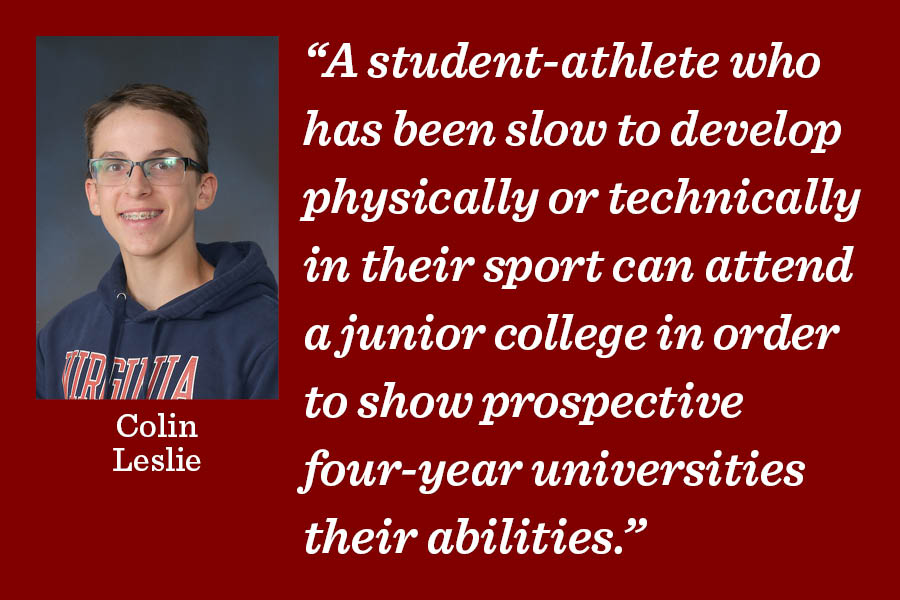Athletes should consider attending a junior college
April 9, 2020
According to their team websites, seven of the 33 players on the University of Illinois baseball roster attended a junior college beforehand, and 11 of the 38 players on the University of Iowa’s team did the same.
These 14 players and the group of students they represent should discredit the idea that a high school student-athlete must immediately attend a four-year university. At Illinois and Iowa, former junior college athletes make up about 21% and 29% respectively. U-High student-athletes should consider junior college as a legitimate option and their college counselors should make sure they know what a junior college has to offer.
It is understandable that student-athletes and their families who can afford to pay for a four-year university, as many U-High families can, would dismiss the option of a junior college; however, doing this dismisses the athletic and educational advantages that junior college offers, such as playing time and smaller class sizes. It is not just about the lower costs and financial aid, which are appealing nonetheless.
A student-athlete who has been slow to develop physically or technically in their sport can attend a junior college in order to show prospective four-year universities their abilities. Because junior colleges are two-year schools exclusively for first and second year students, freshmen often get playing time immediately, which allows them to develop and get noticed by university recruiters. At universities, on the other hand, freshmen are often benched for the entire year, presenting unideal situations for the development of student-athletes.
For a student-athlete who has trouble academically and whose grades may not be satisfactory to get into their ideal four-year university, despite being advanced enough athletically, junior colleges are appealing. According to the Wayne County Community College District in Detroit, the average community college class has 25-35 students, while four-year universities can have lecture halls with 150-300 or more students. With smaller classes, student-athletes can obtain one-on-one help from their teachers at junior college, something that is not offered by many universities.
A junior college has more to offer than just lower costs and financial aid. There is no reason not to present all U-High student-athletes with every single option when helping them make a decision about the next stage of their life. Rather than pushing slowly-developing athletes or academically-challenged students into a situation that they are not ready for and that does not meet their needs, we should remove the pressure of choosing a four-year university and inform them about junior colleges.





























































John Merrill • Apr 13, 2020 at 11:16 am
Good to challenge convention with sound, compelling arguments. Well done.
Lee Hodges II • Apr 11, 2020 at 7:20 pm
Great article, very informative and great points made!